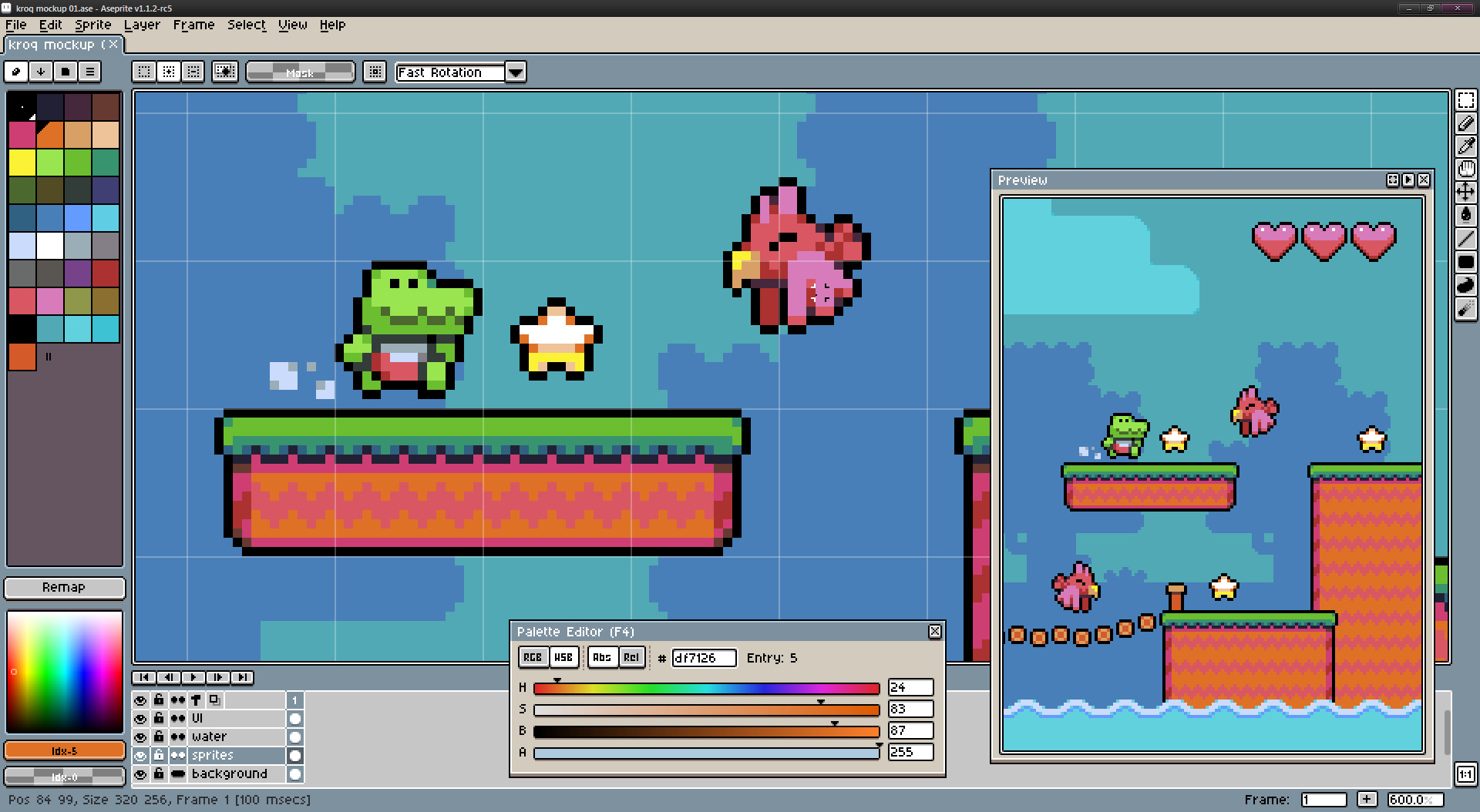
#ASEPRITE ANIMATION TUTORIAL INSTALL#
No need to install any third party addons or patches. Godot automatically reimports the image and updates it. From then on, I can just use Ctrl+Shift+X or File -> Repeat Last Export, to update my exported sprite sheet. In Aseprite, I just go to File -> Export Sprite Sheet -> (set the setting I want, and select a folder within my Godot project) hit ok. I also use Aseprite, but I don't use the addon in this tutorial.

The timeline gives you total control over frames, layers, and cels. Size - Tiny sprites limit the motion you can depict, while larger sprites are time-consuming and difficult to animate. You can add details after you are satisfied with the motion. KEY POINTS Start simple - Create simple sprites with clear color separation for the sake of animating. Can be used to draw cliffs, clouds, tree bark, brick pattern, and many more by changing the pattern. Animation Aseprites main goal is to be a tool to create animations. They are easy to manage and just have a nice gallop to them. If $AnimatedSprite.current_animation != newanim: Bush Tutorial Aseprite, Wildan Rahmat Creating bushes or trees by using a pattern and applies it to brush tool in Aseprite. Oh, in the tutorial they are using the AnimatedSprite node. If $AnimationPlayer.current_animation != newanim: If you don't do this and you start the animation within the physics_process, it will constantly start the animation with every drawn physics frame, resulting in just the frist frame of your animation being shown.

Basically it just makes sure the animation you want to play is not already playing. Advanced Scaling (in Sprite menu)- allows for upscaling pixel art without introducing new colors using a variety of algorithms: Nearest Neighbor, Eagle, Scale2x, Scale3x, and a custom algorithm named Hawk.

I have a function to switch between animations.


 0 kommentar(er)
0 kommentar(er)
